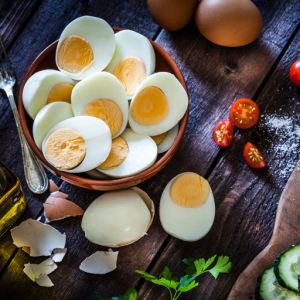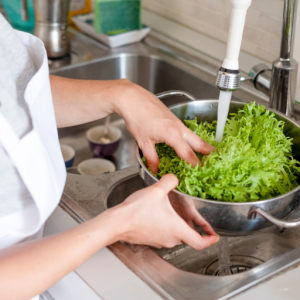Breaking through the Buzz: Are Trendy Diets All They’re Cracked Up to Be?

In January, going on a diet is always a popular choice for the inevitable New Year’s resolutions. But which diet? With so many trends filling our social media feeds, we asked the experts at Memorial Wellness Center to separate fact from fad fiction.
The Paleo Diet
Is it a life-saving wonder or something that should have been left in the Stone Age?
The Paleo diet does offer many benefits. The modern paleo diet strives to eliminate processed foods and opt for foods that hunters and gatherers of caveman times might have found.
Some acceptable foods on the Paleo diet include meat, poultry, seafood, fresh fruits and non-starchy vegetables (those that are not corn, peas, potatoes and winter squash), nuts, seeds, eggs and unsaturated oils.
Foods eliminated include grains, beans, dairy products, soy products, savory snacks, refined sugar, added salt and high-fat meats.
This diet can lead to weight loss because of the dietary restrictions, increased protein and fiber intake and more omega-3 and -6 intake from seafood protein sources, as well as decreased sodium and refined sugar intake.
Drawbacks include increased risk for bone disease due to restricted dairy and soy milk, increased grocery budget (most Paleo foods are more costly) and general dissatisfaction with eliminating all starchy carbohydrate foods and sweets.
Superfoods
Could kale, blueberries and chard take you from zero to superhero?
The term “superfood” generally refers to a food higher than most foods in nutrients. Superfoods can include vitamins, minerals, fiber, antioxidants, phytonutrients and healthy fats. Some of these foods include blueberries, seeds, fermented foods and more.
Benefits to eating superfoods include an increase in vitamins and minerals, fiber and other nutrients found within these foods.
The biggest criticism of relying solely on superfoods is believing the myth that if you eat kale at one meal, you can eat less healthy foods at another meal. Instead, if you were to eat generally nutritious foods throughout each day, you would likely take in more nutrients than if you were to eat one superfood per day and less nutritious foods otherwise.
Kombucha
Can it cure cancer, arthritis and other diseases as sometimes claimed? Or can it be harmful?
Kombucha is traditionally made by brewing black tea, adding sugar and then fermenting with special yeast or kombucha yeast.
Kombucha is said to increase hair growth, add healthy gut bacteria and help with arthritis, memory loss, aging and more. Scientific evidence of how and why kombucha helps these ailments does not really support any of these claims.
There are also cautions: kombucha is not pasteurized and could cause harmful side effects if not properly cultured. Some experts recommend limiting kombucha as it can lead to excess caffeine and calorie intake, digestive upset and even allergic reactions in some people.
If you drink a bottle of kombucha daily but don’t change your exercise or nutrition routine at all, you probably won’t see any weight loss. Choose one with less added sugar from a source you trust.

Hemp and Chia Seeds
Are the omega-3 fatty acids and antioxidants found in these tiny seeds the secret to a healthy life? Or are you better off just eating some salmon?
When it comes to hemp, chia and flax seeds, a little goes a long way.
All of these seeds per tablespoon boast quality protein (up to three grams per tablespoon depending on type of seed), both soluble and insoluble fiber and high levels of omega-3 and -6 fatty acids. Just one tablespoon per day can take you a long way to help decrease your risk of cardiovascular disease, given the amount of fiber and omega fatty acids they contain.
Add these seeds to yogurt, oatmeal or cream of wheat in the morning to give your breakfast more nutritional heft. Adding these seeds into a healthy diet can boost the quality of your diet even more.
However, don’t fall into the “superfood thinking” that if you add these seeds, the rest of your food does not have to be nutritional. These types of additions do not take the place of overall good nutrition—they simply add to an already healthy diet.
Detox Diets, Cleanses and Juice Fasting
Do these clean your body of the dangerous toxins found in junk food? Or do they just help you temporarily shed water weight and cause nutritional deficits?
Cleansing is a diet method in which you make and drink a solution of various items like lemon juice, water, teas, spices and herbs. These cleanses tend to be very low-calorie and provide little nutrition, but claim an ability to get rid of toxins found within the body.
In juice fasting, multiple servings of fruits and veggies are blended and substituted for meals throughout the day.
Juice fasting and cleanses can jump-start weight loss and move you out of unhealthy eating habits and behaviors. The repetition and specificity provided through these diets will give those who use them structure and a starting point to make changes. However, we don’t recommend starting your New Year’s resolutions with a cleanse.
Neither cleanses nor juice fasts provide the nutrients recommended on a daily basis. For people who have conditions like diabetes, kidney disease and nutritional deficiencies, fasting and cleanse diets can be quite harmful.
For instance, if you have diabetes, a cleanse puts you at risk for low blood sugar. If you have anemia, you’re at risk for aggravating the condition, as you are not taking in adequate amounts of nutrients needed to correct the deficiency.
Juice fasting can also be very expensive as the juice requires a lot of fruits and vegetables to make just one serving of the juice.
Another thing to consider is that on a diet with such extreme restriction and little to no solid food, you make the desire and cravings worse for more unhealthy choices.
Finally, there’s the big clincher: Little research exists to prove that these detox diets “cleanse” harmful toxins from your body.

Gluten
Just give it to us straight. Is gluten as bad as people say?
Gluten is the protein found in wheat, as whey is to dairy. Gluten gives dough the ability to stretch and flex.
Gluten-free diets are beneficial for people who have celiac disease, where the body’s immune system attacks the intestines when gluten is consumed. People with celiac disease report a variety of symptoms including gassiness, bloating and vitamin/mineral deficiencies. People with multiple sclerosis and other autoimmune disease may benefit from gluten-free diets as well; however, there is little research to support this claim.
A gluten-free diet may help to reduce caloric intake by limiting the amount of starchy or sugary foods consumed. By decreasing calories, you will likely lose weight.
That said, going gluten-free isn’t the only way to decrease the calories you’re eating throughout the day and, like fasting or cleansing, may make cravings worse.
Ultimately, are these trends the answer to all our health problems? Or is it the tried- and-true “eating healthy and incorporating physical activity” the magic answer?
The Big Question about Fad Diets
When people see health benefits from these trends, is the success due to the trend itself, or is it a halo effect of just eating less or eating healthier?
Most people trying to lose weight with any strategy see only the benefits and maybe not the drawbacks if they actually lose weight. But weight loss does not always equal health.
To see healthy results, including weight loss, Memorial Wellness Center dietitians recommend:
- Eating structured meals and snacks that include protein and fiber
- Drinking adequate amounts of hydrating fluid
- Exercising frequently
- Increasing your fruit and veggie intake
For weight loss itself, we need to look at energy balance. You must create a deficit of lower calories in versus calories out to lose weight. There may also be other factors inhibiting weight loss, including polycystic ovarian syndrome, hormone imbalance, disordered eating and more. Following fad diets likely won’t help you reach your wellness goals long-term.
To find a sustainable nutrition plan that lasts well beyond the latest fads of New Year’s resolutions, see a registered dietitian who can create individualized goals based on your specific health history and preferences. Or visit the Memorial Wellness Center.
